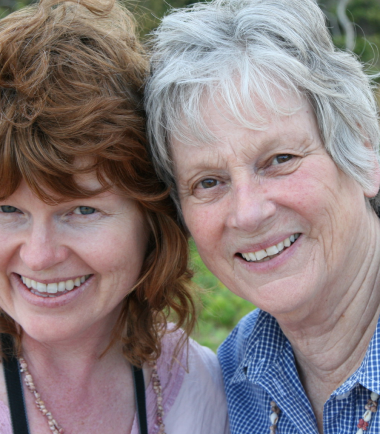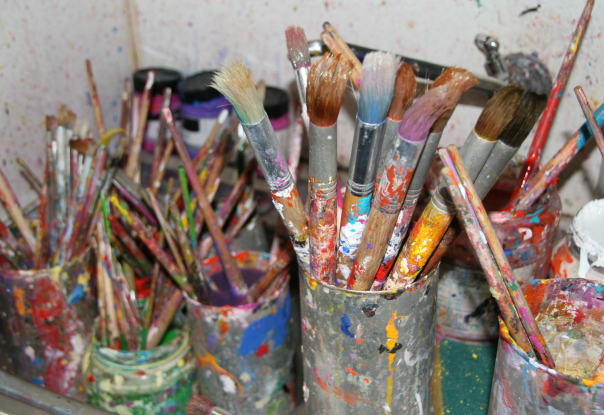PALYA ART TOURS: A BACKGROUND
Palya Air Tours (formerly Didgeri Air Art Tours) began in 1986 facilitating introductions between Indigenous and non-Indigenous people following the Director, Helen Read’s experience as a nursing sister and pilot in Australia’s Western Desert. Her aim was to bring the richness and diversity of ancient living cultures and art to become better recognised in Australia and abroad.
Flying Deep Over Australia
In 1985, Helen worked as a flying nurse for the Pintupi Homelands Health Service. Her first training was in fine art so when she had the opportunity to fly senior Cultural Custodians over Traditional Lands, she took great interest in the relationship between the people and landscape, the art and culture seeing the remarkable paintings being created.
Pintupi country is west of Alice Springs in and around Walungurru (Kintore) in the Northern Territory and Kiwirrkurra (Pollock Hills) in Western Australia – country home to the now famous Papunya Tula Artists, whose gallery is in Alice Springs.
It was here that local artists, custodians and Maparn (Traditional Doctors) taught Helen to see Country on a deeper level, and relate what she was seeing to the paintings being created nearby.
Helen’s work with the Pintupi Homelands Health Service was both rewarding in being able to offer health care but also frustrating because resources were so minimal. Burnt out by 24 hour working days, frequent emergencies and the lack of medical staff, Helen realised she had only scratched the surface of what was needed to be done, and could be done, to improve conditions for First Peoples. It was then that she decided a different approach was needed to help support people living on Country.
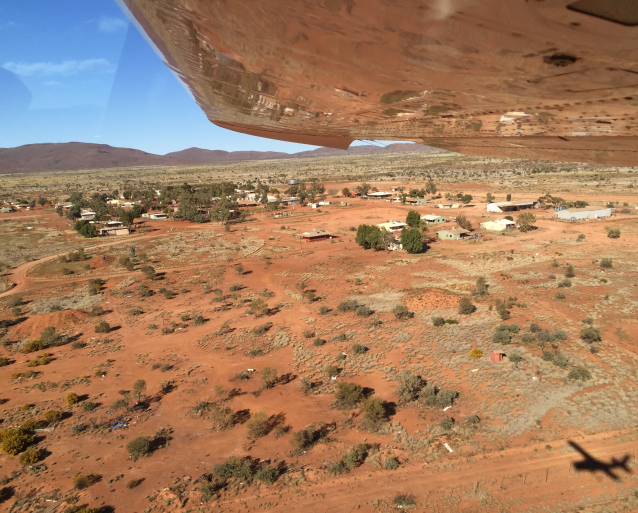
Taking off from Haasts Bluff, South of the MacDonnell Ranges
Helen decided to make different use of her piloting skills. Working alongside community members, she began to fly new Australians and thoughtful people from abroad with means and influence, out to remote communities across Arnhem Land, Kimberley and the Central Deserts.
A growing number of politicians, art collectors, museum and gallery directors , philanthropists and researchers started to join Helen visiting artists living in remote areas to engage with, learn more about, Australia’s First Nations cultures and to ‘feel’ the Country’
Didgeri Air Art Tours (now Palya Art Tours) registered as a business in 1986. Palya Art registered in 1994 because of the requests from clients for Helen to help source specific artworks. (Palya Art Tours, supported by Palya Art sales, was a better name for easier ‘Searches’ when the internet arrived
Crossing Cultural Ways
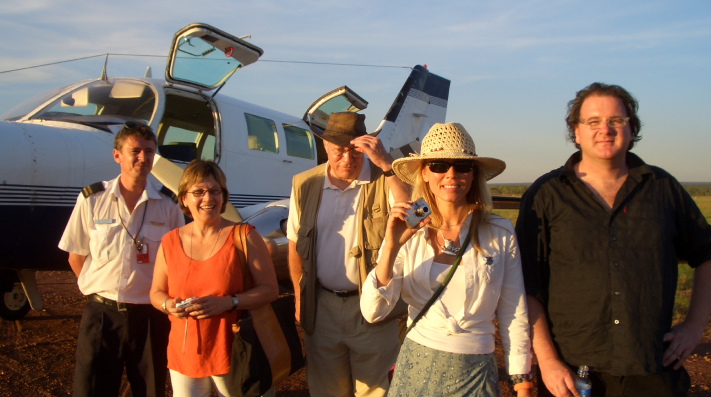
L-R Hardy Aviation pilot, Ms. J. Hugo from Perth, Western Australia, M. J.P Courcol from France, Ms K. Ladygo from Russia, Mr. R. Leonard from New Zealand stretching legs on a Palya Art Tour.
Over the years, Helen’s relationship with artists, the artists’ families, remote communities and Art Centres continued to grow. There is an established cycle whereby Art Centres consign artworks to Palya Art for city exhibitions and these Art Centre exhibitions attract audiences to Indigenous art and culture and opens doors to the possibility of flying out to meet the artists.
Art sales and community visits bring much needed financial resources into to the artists’ communities. Importantly too, lasting memories of people met, insights into Indigenous people’s cultural diversity and strengths is gained, along with, for the visitors, frequently the delight too in making an art purchase.
This support helps fulfill one of the primary aims underpinning the creation of Palya Art Tours: to improve conditions in remote communities to the point where people have the resources to choose to maintain local language and culture, incorporate into dominant western culture or choose to do both.
“Aeroplane Driver”
At first, Indigenous elders, artists and families were shy of visitors. But local people knew Helen by name, if not by person. She is variously known as ‘Sister’, ‘Nampitjimpa’, ‘Helen’ or ‘Aeroplane Driver’. Helen’s reputation helped to ‘break the ice’, allowing her to bring visitors onto traditional lands knowing she will be careful and respectful of Aboriginal culture and sensitivities.
The Journey Doesn’t End
Aboriginal culture and art. People are happy to ‘learn up’ travellers on the importance of land and kinship, life and culture.
Visitors who have toured often find their lives enriched and changed forever. People frequently go on to contribute in diverse ways. Visitors have given back with medical research, volunteering services, and philanthropic activities supporting entities and projects. Others have taken formal studies in Indigenous art and Aboriginal history. Many have begun collecting art and speaking well of what they have come to understand.

Bai Bai Sunfly Napangardi ‘Learning us up’. Wirrimanu, Balgo Hills 2014. Photo: Helen Read Copyright applies to all images.
PALYA ART TOURS TESTIMONIALS
INDIGENOUS ART CENTRES OF AUSTRALIA
Widespread and varied in structure, aim and artistic practice, artists’ Art Centres play a vital role in remote communities across Australia. Providing material and social support and an administrative matrix for exhibition programs and sales, artists build an environment for creative working, maintenance of culture and cross cultural exchange.

Barnumbirr (Morning Star Pole) by Henry Gambika Nupurra (Detail). © The Artist & Elcho Island Art & Craft, Photo by Helen Read
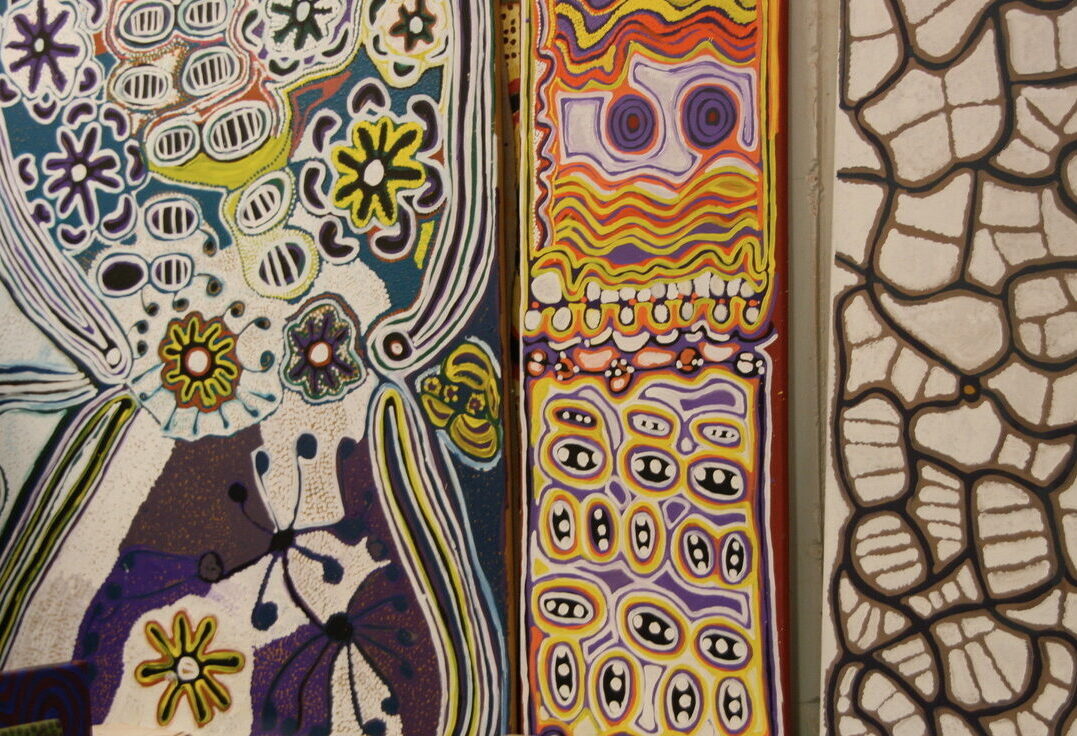
Warnayaka Arts Lajamanu
Photo Helen Read Circ. 2012
There are now more than seventy First Nations Art Centres located across North and North West Australia. Palya Art Tours has been working to help strengthen the Art Centres success over the last thirty-five years. We would like to support more, if only time and logistics (and health) allowed. It is good to see other art tours taking place in support of remote Art Centres.
Extensive lists of current First Nations People’s Art Centres in Australia are available via these links:

